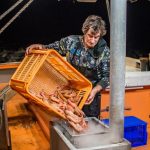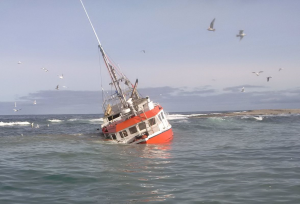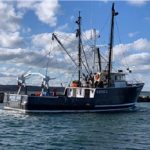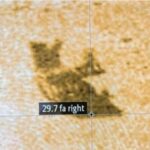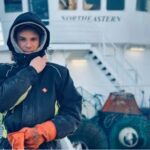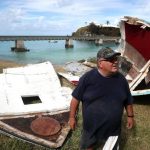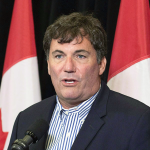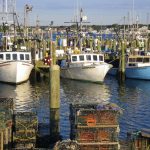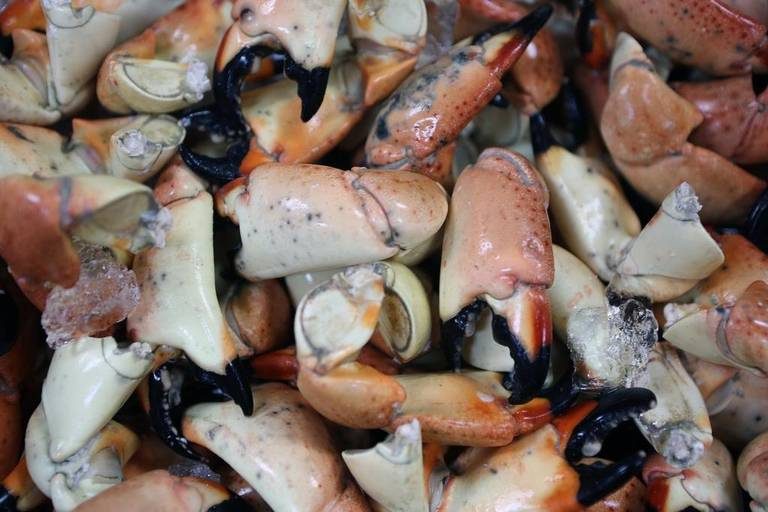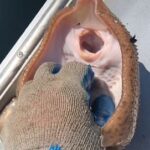Tag Archives: Cook Inlet
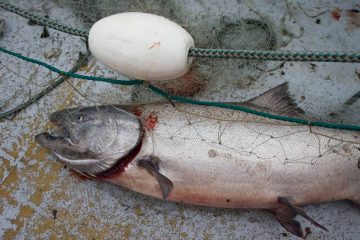
ADFG proposes sweeping changes to Cook Inlet salmon goals
The Alaska Department of Fish and Game’s recommendations for salmon escapement goal ranges in Upper Cook Inlet are out significantly earlier than they have been in past years. Upper Cook Inlet, which reaches north from the Kasilof River, encompasses a number of heavily fished salmon stocks, including the Kenai and Susitna rivers. ADFG reviews the escapement goal ranges for the rivers every three years or so and makes recommendations before the Board of Fisheries takes up the proposals for the area during the in-cycle meeting. >click to read<14:59

Breaking: Magnitude 7.0 Earthquake Shakes Alaska, Damaging Roads, Buildings
In Anchorage, Alaska, people took refuge under tables and fled outdoors on Friday morning, as a magnitude 7.0 earthquake struck just north of the city. Some roads, bridges and buildings have been damaged, and schools and some businesses are shuttered for the day. Gov. Bill Walker has issued a declaration of disaster. Anchorage police report “major infrastructure damage” across the city. “Many homes and buildings are damaged,” the police department says. “Many roads and bridges are closed.” A tsunami warning was temporarily issued for coastal regions of Cook Inlet and the Southern Kenai Peninsula, but it has since been canceled. >click to read<14:54

Kenai River anglers ask for closure of Cook Inlet commercial set netting
The Kenai River Sportfishing Association (KRSA) is calling for the closure of set net fishing on the Cook Inlet until adequate numbers of king and sockeye salmon enter the Kenai River. The organization is asking Gov. Bill Walker to direct the Alaska Department of Fish and Game to take action and help Kenai River salmon numbers rebound.,,, One commercial set netter agrees a closure could benefit harvests for both sides. “As a commercial set netter for almost 50 years, and speaking for myself,” Ken Coleman said, “I believe we commercial fisherman have always been in favor of department closures when the health of the fisheries is at risk, whether it be sockeyes, or Chinook or other species. >click to read<08:24
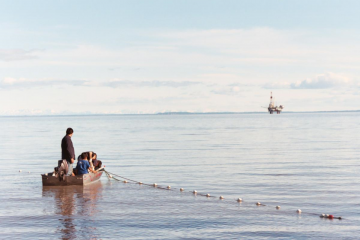
Drilling plan may not change much locally but still worries fishermen
Last week the Trump administration proposed to drastically increase the amount of Alaska waters open for oil and gas leasing. Along with keeping Cook Inlet open, it would also make areas near Kodiak and the Gulf of Alaska available for drilling, both of which are currently closed. Yet, it’s unclear if companies will be interested in drilling there even if the plan is approved. Still, the move worries local environmentalists and fishermen. click here to read the story 10:54 
ASMI Announces Winners of 1st Alaska Commercial Fishing Video Contest – Fisherman Kamirin Couch Takes Home the Grand Prize
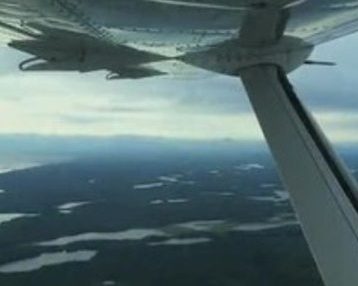 Every day, fishermen brave the waters of Alaska to bring wild seafood from the sea to table for the world to enjoy. To recognize the men and women dedicated to harvesting wild, natural and sustainable seafood, the Alaska Seafood Marketing Institute (ASMI) put out a call for video submissions for the first-ever Alaska Seafood Commercial Fishing Video Contest. ASMI received entries from fishermen who shared their personal stories showcasing why an exhausting but beautiful life on or near the water is worth it for many reasons. Video, click here to read the story 09:26
Every day, fishermen brave the waters of Alaska to bring wild seafood from the sea to table for the world to enjoy. To recognize the men and women dedicated to harvesting wild, natural and sustainable seafood, the Alaska Seafood Marketing Institute (ASMI) put out a call for video submissions for the first-ever Alaska Seafood Commercial Fishing Video Contest. ASMI received entries from fishermen who shared their personal stories showcasing why an exhausting but beautiful life on or near the water is worth it for many reasons. Video, click here to read the story 09:26
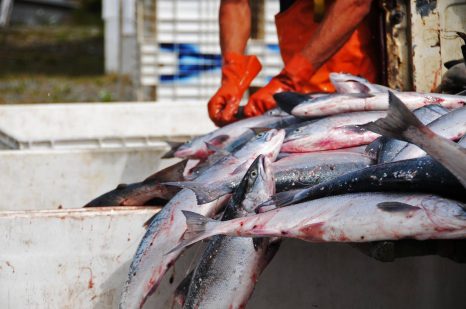
2017 sockeye forecast weak for Cook Inlet
Upper Cook Inlet’s commercial salmon fishermen are predicted to have another slow season, if the forecast proves accurate. The Alaska Department of Fish and Game’s 2017 commercial salmon fishery outlook predicts a total run of about 4 million fish to all the stream systems in Upper Cook Inlet, which includes the Kenai, Kasilof and Susitna rivers as well as a number of smaller streams. Commercial fishermen are projected to harvest about 1.7 million of that, the lowest projected harvest in the last 15 years. It’s largely the Kenai River not living up to the recent 10-year average. The river is projected to see a return of 2.2 million sockeye, about 39 percent below the recent 10-year average of 3.6 million fish. By contrast, the Susitna River is projected to see about 366,000 sockeye return, about 5 percent below the average; the Kasilof River is expected to see about 825,000 sockeye, about 16 percent below the recent average, according to the forecast. Better than 2016 – Improving prices – Board of Fisheries changes – click here to read the story 08:29
North Pacific Fishery Management Council forced back into Cook Inlet salmon fray
 The North Pacific Fishery Management Council will open up a process next week that will likely take years to redesign the Cook Inlet salmon fishery management plan. A federal appeals court decided last fall that the council, which oversees all federal fisheries management in the North Pacific between 3 and 200 nautical miles offshore — known as the United States Exclusive Economic Zone — has to craft a management plan for the salmon fishery. The council decided in 2011 to hand over several of Alaska’s salmon fisheries to state managers by removing them from the existing fishery management plan, and though an Alaska U.S. District judge ruled that it was legal in 2014, a three-judge panel of the 9th Circuit Court of Appeals unanimously reversed the decision this past September. The North Pacific Fishery Management Council is tentatively scheduled to hear the first discussion paper prepared by the National Marine Fisheries Service on what the plan could look like and how they should proceed during the council’s meeting April 6 in Anchorage. How did we get here? continue reading the story here 12:01
The North Pacific Fishery Management Council will open up a process next week that will likely take years to redesign the Cook Inlet salmon fishery management plan. A federal appeals court decided last fall that the council, which oversees all federal fisheries management in the North Pacific between 3 and 200 nautical miles offshore — known as the United States Exclusive Economic Zone — has to craft a management plan for the salmon fishery. The council decided in 2011 to hand over several of Alaska’s salmon fisheries to state managers by removing them from the existing fishery management plan, and though an Alaska U.S. District judge ruled that it was legal in 2014, a three-judge panel of the 9th Circuit Court of Appeals unanimously reversed the decision this past September. The North Pacific Fishery Management Council is tentatively scheduled to hear the first discussion paper prepared by the National Marine Fisheries Service on what the plan could look like and how they should proceed during the council’s meeting April 6 in Anchorage. How did we get here? continue reading the story here 12:01
Fishy-nomics
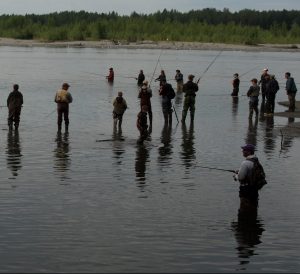 As a blunt reminder of the value of salmon to all Alaskans, businessmen and women from the Matanuska-Susitna Borough paraded before the Alaska Board of Fisheries on Saturday to talk business. Money and jobs have always been the rallying cries of commercial fishermen who catch the majority of salmon that make their way into Cook Inlet, the long fiord at the front door of Anchorage. And government, both state and federal, has long been receptive to their financial pleas. When weak king salmon runs in 2012 forced restrictions that put Kenai Peninsula commercial fishermen on the beach, then Gov. Sean Parnell asked for a federal disaster declaration. When it came, the Peninsula Clarion reported, “an estimated 443 permit holders from Cook Inlet’s eastside setnet fishery” vied for $4.6 million in aid. No government entity, however, has jumped in to bail out Mike Hudson, the owner of 3 Rivers Fly & Tackle in Wasilla, even though his business has in recent years been devastated by weak salmon returns linked in part to how Inlet salmon are managed. continue reading the article here 09:40
As a blunt reminder of the value of salmon to all Alaskans, businessmen and women from the Matanuska-Susitna Borough paraded before the Alaska Board of Fisheries on Saturday to talk business. Money and jobs have always been the rallying cries of commercial fishermen who catch the majority of salmon that make their way into Cook Inlet, the long fiord at the front door of Anchorage. And government, both state and federal, has long been receptive to their financial pleas. When weak king salmon runs in 2012 forced restrictions that put Kenai Peninsula commercial fishermen on the beach, then Gov. Sean Parnell asked for a federal disaster declaration. When it came, the Peninsula Clarion reported, “an estimated 443 permit holders from Cook Inlet’s eastside setnet fishery” vied for $4.6 million in aid. No government entity, however, has jumped in to bail out Mike Hudson, the owner of 3 Rivers Fly & Tackle in Wasilla, even though his business has in recent years been devastated by weak salmon returns linked in part to how Inlet salmon are managed. continue reading the article here 09:40
More restrictions proposed for Northern District setnetters
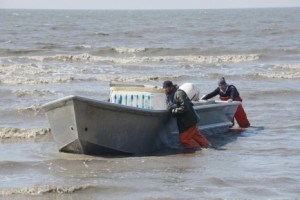 Setnetting on the beaches of northern Cook Inlet isn’t a very visible fishery, but participants argue it’s a viable one. The Northern Cook Inlet setnet fishery operates between a line between Boulder Point in Nikiski and the Kustatan Peninsula on the west side of the inlet and Fire Island. Fishermen can target all five species of Pacific salmon at different times throughout the summer, beginning May 25 with a directed king salmon fishery. As northern district setnetter Trevor Rollman put it in his testimony the Board of Fisheries on Friday, the fishery doesn’t have an official closure, but rather it’s the weather that closes them for the season. Most of the fishermen land in Anchorage. Many of them direct-market their catch, as Rollman said he intended to do with his site in the future. Direct-marketers, sometimes called catcher-sellers, harvest and prepare their catch themselves, selling it directly to customers. Read the full article here 08:57
Setnetting on the beaches of northern Cook Inlet isn’t a very visible fishery, but participants argue it’s a viable one. The Northern Cook Inlet setnet fishery operates between a line between Boulder Point in Nikiski and the Kustatan Peninsula on the west side of the inlet and Fire Island. Fishermen can target all five species of Pacific salmon at different times throughout the summer, beginning May 25 with a directed king salmon fishery. As northern district setnetter Trevor Rollman put it in his testimony the Board of Fisheries on Friday, the fishery doesn’t have an official closure, but rather it’s the weather that closes them for the season. Most of the fishermen land in Anchorage. Many of them direct-market their catch, as Rollman said he intended to do with his site in the future. Direct-marketers, sometimes called catcher-sellers, harvest and prepare their catch themselves, selling it directly to customers. Read the full article here 08:57
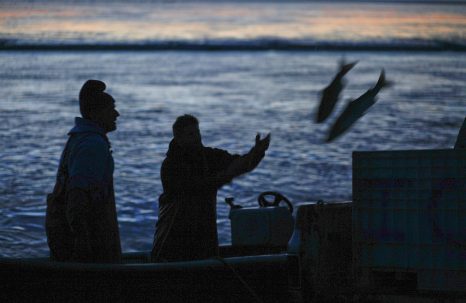
Rebuttal: The actual, factual new realities of Cook Inlet salmon – Catherine Cassidy of Kasilof
In his opinion piece published in the Alaska Journal of Commerce on Feb. 8, (Click here to read it) Mr. Karl Johnstone, presumably from his home in Arizona, gave a eulogy at the graveside of Cook Inlet commercial salmon fishing. Actually, the industry is alive and well and helping Alaskans get through these economic hard times. Mr. Johnstone uses the same old tired, outdated arguments: there is not enough salmon in Cook Inlet for all users; Cook Inlet salmon can’t compete with farmed salmon, sportfisheries are so much more valuable than commercial fisheries; etc. He cites an economic report about angler spending that was conducted prior to the national recession in 2008 and the recent king salmon decline and compares the numbers to the very lowest possible measure of commercial harvest value in Cook Inlet on a bad year. Johnstone claims that Alaska salmon can’t compete with farmed salmon. Twenty years ago that was a problem but the industry adapted and now wild Alaska salmon have a solid market niche and Cook Inlet sockeye is a very premium, sought-after product in America. The worst economic lie that he and his pals have been promoting is that the sport industry and personal use fisheries could actually grow large enough to replace the value of the commercial industry to our state. Then, she pins him. Continue reading the op-ed here 13:46
Jewell Announces Offshore Oil and Gas Leasing Plan for 2017-2022
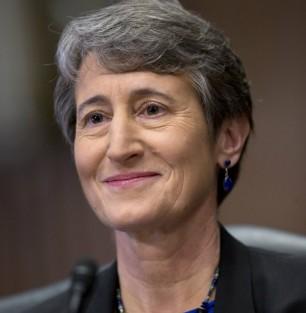 After considering more than 3.3 million public comments and holding 36 public meetings, U.S. Secretary of the Interior Sally Jewell and Bureau of Ocean Energy Management (BOEM) Director Abigail Hopper today released the final plan to guide future energy development for the Nation’s Outer Continental Shelf (OCS) for 2017-2022. The plan takes a balanced approach to best meet the nation’s energy needs by including areas offshore with high resource potential and mature infrastructure while protecting regions with critical ecological resources. The Proposed Final Program offers 11 potential lease sales in four planning areas – 10 sales in the portions of three Gulf of Mexico Program Areas that are not under moratorium and one sale off the coast of Alaska in the Cook Inlet Program Area.Areas off the Atlantic coast are not included in this program. After an extensive public input process, the lease sale that was proposed in the Draft Proposed Program in the Mid- and South Atlantic area was removed during the earlier Proposed Program stage of the process due to current market dynamics, strong local opposition and conflicts with competing commercial and military ocean uses. Read the press release here 16:32
After considering more than 3.3 million public comments and holding 36 public meetings, U.S. Secretary of the Interior Sally Jewell and Bureau of Ocean Energy Management (BOEM) Director Abigail Hopper today released the final plan to guide future energy development for the Nation’s Outer Continental Shelf (OCS) for 2017-2022. The plan takes a balanced approach to best meet the nation’s energy needs by including areas offshore with high resource potential and mature infrastructure while protecting regions with critical ecological resources. The Proposed Final Program offers 11 potential lease sales in four planning areas – 10 sales in the portions of three Gulf of Mexico Program Areas that are not under moratorium and one sale off the coast of Alaska in the Cook Inlet Program Area.Areas off the Atlantic coast are not included in this program. After an extensive public input process, the lease sale that was proposed in the Draft Proposed Program in the Mid- and South Atlantic area was removed during the earlier Proposed Program stage of the process due to current market dynamics, strong local opposition and conflicts with competing commercial and military ocean uses. Read the press release here 16:32
Following court decision Cook Inlet fishermen wait for direction
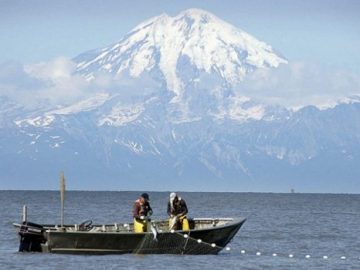 Concerned fishermen gathered at the North Pacific Fishery Management Council’s October meeting in Anchorage to discuss a recent federal court decision that turns control of salmon fisheries in Cook Inlet, Prince William Sound and the Alaska Peninsula over to state management. Though stakeholders brought their suggestions, the council did not direct its staff to any action related to the subject of a salmon FMP. Instead, the council reiterated that the decision will be remanded back to the lower court where it could either be appealed or produce a directive for the council to write a salmon FMP. The North Pacific Fishery Management Council governs federal fisheries, which take place from three to 200 miles offshore. In 2013, industry group United Cook Inlet Drift Association, or UCIDA, filed a lawsuit to repeal a 2011 council decision, which became Amendment 12 to the Alaska salmon fishery management plan, or FMP. The initial suit was rejected by U.S. Alaska District Court Judge Timothy Burgess in September 2014. A three-judge panel of the 9th Circuit unanimously remanded the case back to Burgess with instructions to find in favor the plaintiffs. Read the story here 11:48
Concerned fishermen gathered at the North Pacific Fishery Management Council’s October meeting in Anchorage to discuss a recent federal court decision that turns control of salmon fisheries in Cook Inlet, Prince William Sound and the Alaska Peninsula over to state management. Though stakeholders brought their suggestions, the council did not direct its staff to any action related to the subject of a salmon FMP. Instead, the council reiterated that the decision will be remanded back to the lower court where it could either be appealed or produce a directive for the council to write a salmon FMP. The North Pacific Fishery Management Council governs federal fisheries, which take place from three to 200 miles offshore. In 2013, industry group United Cook Inlet Drift Association, or UCIDA, filed a lawsuit to repeal a 2011 council decision, which became Amendment 12 to the Alaska salmon fishery management plan, or FMP. The initial suit was rejected by U.S. Alaska District Court Judge Timothy Burgess in September 2014. A three-judge panel of the 9th Circuit unanimously remanded the case back to Burgess with instructions to find in favor the plaintiffs. Read the story here 11:48
Fishermen, state, in flux after circuit court overturns state control of Cook Inlet salmon
 In Cook Inlet, managing the salmon runs for commercial, sport and subsistence interests is so controversial, it’s often called a fish war. A group of commercial fishermen who think the state is mismanaging the fisheries, have won the latest battle. A three-judge panel at the U.S. Ninth Circuit Court of Appeals ruled last week that the area needs federal oversight. But no one knows exactly what that will mean. The United Cook Inlet Drift Association and the Cook Inlet Fishermen’s Fund say that instead of addressing habitat problems or fighting invasive species that eat salmon in Cook Inlet – the state simply restricted commercial fishing. So the fishing groups sued the National Marine Fisheries Service. They argued against a 2011 decision to remove several Alaska salmon fisheries — including Cook Inlet — from federal management and transfer the responsibility of managing salmon to the state. A three-judge panel of the U.S. Ninth Circuit Court of Appeals agreed. For commercial fishermen like Brian Harrison, in Homer, the court’s decision is a victory. But, he’s not sure what to expect going forward. Read the story here 18:53
In Cook Inlet, managing the salmon runs for commercial, sport and subsistence interests is so controversial, it’s often called a fish war. A group of commercial fishermen who think the state is mismanaging the fisheries, have won the latest battle. A three-judge panel at the U.S. Ninth Circuit Court of Appeals ruled last week that the area needs federal oversight. But no one knows exactly what that will mean. The United Cook Inlet Drift Association and the Cook Inlet Fishermen’s Fund say that instead of addressing habitat problems or fighting invasive species that eat salmon in Cook Inlet – the state simply restricted commercial fishing. So the fishing groups sued the National Marine Fisheries Service. They argued against a 2011 decision to remove several Alaska salmon fisheries — including Cook Inlet — from federal management and transfer the responsibility of managing salmon to the state. A three-judge panel of the U.S. Ninth Circuit Court of Appeals agreed. For commercial fishermen like Brian Harrison, in Homer, the court’s decision is a victory. But, he’s not sure what to expect going forward. Read the story here 18:53
From sea to sale: Fishermen skip processors, go straight to buyers
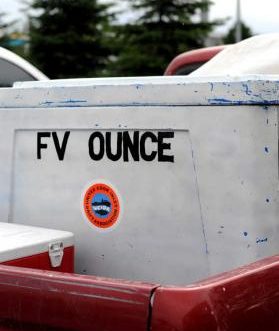 Many of the salmon that wind up in the nets of the fishing vessel Ounce have their buyer’s name on them from the moment they come out of the sea. Out in Cook Inlet, Chuck Lindsay and his business partner Hannah Heimbuch will haul in silver, red and chum salmon from their drift gillnets and sort them for clients in Alaska and elsewhere. Though most of them will cross the dock at one of the area’s processors, about one-fifth will be carefully packed into a cooler in the back of Lindsay’s truck and delivered to his customers’ doors. Lindsay, a co-owner of Kenai Wild Salmon Co. with Heimbuch, has directly marketed part of his catch to customers for the past three years. Once the boat has docked for the day, if he and his partner are not fishing the next day, they will deliver the fish in the morning. The fish is always delivered within 12 hours, he said. Read the rest here 08:11
Many of the salmon that wind up in the nets of the fishing vessel Ounce have their buyer’s name on them from the moment they come out of the sea. Out in Cook Inlet, Chuck Lindsay and his business partner Hannah Heimbuch will haul in silver, red and chum salmon from their drift gillnets and sort them for clients in Alaska and elsewhere. Though most of them will cross the dock at one of the area’s processors, about one-fifth will be carefully packed into a cooler in the back of Lindsay’s truck and delivered to his customers’ doors. Lindsay, a co-owner of Kenai Wild Salmon Co. with Heimbuch, has directly marketed part of his catch to customers for the past three years. Once the boat has docked for the day, if he and his partner are not fishing the next day, they will deliver the fish in the morning. The fish is always delivered within 12 hours, he said. Read the rest here 08:11
Two fishermen rescued from burning fishing boat in Cook Inlet
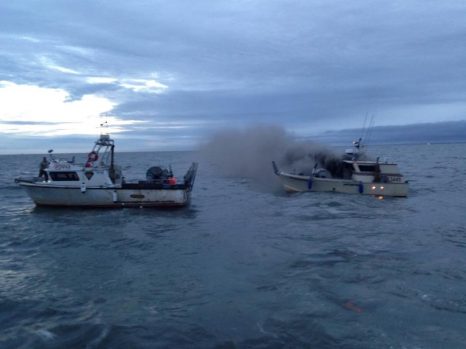 Alaska commercial fishermen report a dramatic rescue in Cook Inlet early Thursday. Domnin Martushev said was getting ready to fish for sockeye salmon early this morning when he noticed thick, black smoke pouring out of a nearby vessel. “We knew something was wrong,” Martushev told KTUU by cell phone from the fishing vessel, Player. Matushev and his captain motored toward the burning vessel. Another fishing boat had also come to help but its engine died so it wasn’t able to assist. The Player approached the burning vessel, Winchester. “We went up to the bow and we grabbed the two passengers. We grabbed their hands and tossed them in our boat,” Martushev said. It turned out the smoke was the result of a fire in the engine room, Martushev said. Read the rest here 13:25
Alaska commercial fishermen report a dramatic rescue in Cook Inlet early Thursday. Domnin Martushev said was getting ready to fish for sockeye salmon early this morning when he noticed thick, black smoke pouring out of a nearby vessel. “We knew something was wrong,” Martushev told KTUU by cell phone from the fishing vessel, Player. Matushev and his captain motored toward the burning vessel. Another fishing boat had also come to help but its engine died so it wasn’t able to assist. The Player approached the burning vessel, Winchester. “We went up to the bow and we grabbed the two passengers. We grabbed their hands and tossed them in our boat,” Martushev said. It turned out the smoke was the result of a fire in the engine room, Martushev said. Read the rest here 13:25
Upping their groundfish game – ADFG opens experimental pollock fishery in Cook Inlet
 Nelson’s net hangs at about 180 feet deep and fishes at about 150. It isn’t deep enough to go out in the middle of the bay, where he thinks the largest concentrations of pollock might be. If the fishery receives an allocation and becomes a regular fixture in the bay, he’ll consider investing in a new net, he said. It would have to be specially-made for catching pollock, and could cost up to $100,000, he said. It’s a large investment, but just the next step in a long fishing career for Nelson. Read the rest here 21:07
Nelson’s net hangs at about 180 feet deep and fishes at about 150. It isn’t deep enough to go out in the middle of the bay, where he thinks the largest concentrations of pollock might be. If the fishery receives an allocation and becomes a regular fixture in the bay, he’ll consider investing in a new net, he said. It would have to be specially-made for catching pollock, and could cost up to $100,000, he said. It’s a large investment, but just the next step in a long fishing career for Nelson. Read the rest here 21:07
Cook Inlet: As we welcome the new year, the fisheries debate continues
 We’re going to usher out the old year just as we welcomed it — discussing the salmon management situation in Cook Inlet. A lot of the allocation discussions of salmon resources statewide revolve around the local economic impact of the respective industries — commercial verses sport. The commercial fishing industry has presented solid economic data for years showing their importance to Alaska’s economic base. Read the rest here 08:38
We’re going to usher out the old year just as we welcomed it — discussing the salmon management situation in Cook Inlet. A lot of the allocation discussions of salmon resources statewide revolve around the local economic impact of the respective industries — commercial verses sport. The commercial fishing industry has presented solid economic data for years showing their importance to Alaska’s economic base. Read the rest here 08:38
Cook Inlet Setnet ban initiative is an anti-salmon initiative
 As you’re out shopping this holiday season, someone wielding a clipboard might approach you and ask if you want to save king salmon. Don’t be fooled. The petition being peddled by professional signature collectors throughout the state won’t save Alaska’s iconic king salmon. In fact, it will hurt our great salmon runs and result in smaller harvests for everyone except a small group of Kenai River sportfishing guides, lodges and private landowners. Read the rest here 16:32
As you’re out shopping this holiday season, someone wielding a clipboard might approach you and ask if you want to save king salmon. Don’t be fooled. The petition being peddled by professional signature collectors throughout the state won’t save Alaska’s iconic king salmon. In fact, it will hurt our great salmon runs and result in smaller harvests for everyone except a small group of Kenai River sportfishing guides, lodges and private landowners. Read the rest here 16:32
First Installment of Federal Fish Disaster Assistance Released, part of the $75 million for fishery disasters nationwide.
 Friday marked the release of $7.5 million in federal disaster assistance for commercial fishermen affected by the 2012 failure of the Chinook salmon in the Yukon and Kuskokwim Rivers and Cook Inlet. Both US Senators Lisa Murkowski and Mark Begich welcomed the news and spoke in support of the decision. Read the rest here 17:26
Friday marked the release of $7.5 million in federal disaster assistance for commercial fishermen affected by the 2012 failure of the Chinook salmon in the Yukon and Kuskokwim Rivers and Cook Inlet. Both US Senators Lisa Murkowski and Mark Begich welcomed the news and spoke in support of the decision. Read the rest here 17:26
Kenai fish managers consider weekend setnet opener in upper Cook Inlet
State fish biologists plan to meet Friday afternoon to assess whether to allow hundreds of Cook Inlet commercial setnetters to put out their nets Saturday for sockeyes, which would dramatically affect the chance for success this weekend by Kenai Peninsula dipnetters and sport fishermen. Read more here 09:02
Alaska: Commercial fishing groups, feds, testify on salmon management
 Alaska has managed its own salmon since statehood, and neither party is questioning that. But the United Cook Inlet Drift Association and Cook Inlet Fishermen’s Fund, who brought the lawsuit forward in February 2013, want federal oversight of salmon management — and believes that is what congress has intended in its regulations of fish in federal waters. The National Marine Fisheries Service, however,, Read more here 08:02
Alaska has managed its own salmon since statehood, and neither party is questioning that. But the United Cook Inlet Drift Association and Cook Inlet Fishermen’s Fund, who brought the lawsuit forward in February 2013, want federal oversight of salmon management — and believes that is what congress has intended in its regulations of fish in federal waters. The National Marine Fisheries Service, however,, Read more here 08:02
Alaska Board of Fisheries leaves dipnetters alone, preserves 24-hour fishing
 After nearly a full day of board deliberations on 25 proposed regulatory changes, the Cook Inlet personal-use fishery remains largely unchanged in the midst of a process that has dramatically restructured commercial set and drift gillnet fishing in the same region. Read more@alaskajournal 08:18
After nearly a full day of board deliberations on 25 proposed regulatory changes, the Cook Inlet personal-use fishery remains largely unchanged in the midst of a process that has dramatically restructured commercial set and drift gillnet fishing in the same region. Read more@alaskajournal 08:18
Commercial setnetter Jim Butler says his fishery has lost 70 percent of its opportunity to catch sockeye. “It’s disappointing that the burden wasn’t shared across the board.” Read more@ktuu 07:23
Alaska Board of Fisheries changes commercial drift fishing in Cook Inlet
 On Monday, the Alaska Board of Fisheries approved several changes to the Central District Drift Gillnet Fishery Management Plan outlined in a proposal submitted by the Matanuska-Susitna Borough Fish & Wildlife Commission. After more than an hour of discussion, the board voted unanimously to Read more@peninsulaclarion 21:33
On Monday, the Alaska Board of Fisheries approved several changes to the Central District Drift Gillnet Fishery Management Plan outlined in a proposal submitted by the Matanuska-Susitna Borough Fish & Wildlife Commission. After more than an hour of discussion, the board voted unanimously to Read more@peninsulaclarion 21:33
Kings in cycle: Salmon follow boom and bust pattern
 The king, or chinook, salmon are the largest of the salmon species and since the world record for a sport-caught king — a 97 pound and 4 ounce fish — was landed in May 1985 by the late Les Anderson, the king fishery on the Kenai River has exploded in both popularity and controversy. More@alaskajournal 23:06
The king, or chinook, salmon are the largest of the salmon species and since the world record for a sport-caught king — a 97 pound and 4 ounce fish — was landed in May 1985 by the late Les Anderson, the king fishery on the Kenai River has exploded in both popularity and controversy. More@alaskajournal 23:06
Environmental Group Sues Over Seismic Work in Cook Inlet
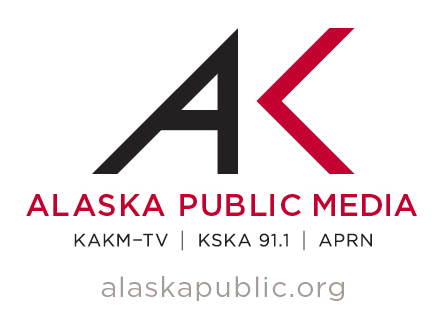 23:33:26 – Oral arguments are being heard Friday in US District Court in Anchorage for a lawsuit that challenges the decision made by the National Marine Fisheries Service to authorize the first of at least three years of seismic exploration in Cook Inlet. continued
23:33:26 – Oral arguments are being heard Friday in US District Court in Anchorage for a lawsuit that challenges the decision made by the National Marine Fisheries Service to authorize the first of at least three years of seismic exploration in Cook Inlet. continued
Closure fresh in memory, setnetters innovate for season
 KENAI — Gary Hollier has a king salmon problem.The commercial setnetter has had it for a few years and he’s far from the only one. Most of the east side setnet fishery in the Cook Inlet was largely shut out of their fishing season last year after seeing their fishing time drastically reduced in 2011 in the name of king salmon conservation.With last season’s federally-declared economic disaster hanging over his head, and the threat of being largely shut out of another season in 2013 looming, the 42-year veteran of commercial setnetting decided to make some drastic changes of his own. continued
KENAI — Gary Hollier has a king salmon problem.The commercial setnetter has had it for a few years and he’s far from the only one. Most of the east side setnet fishery in the Cook Inlet was largely shut out of their fishing season last year after seeing their fishing time drastically reduced in 2011 in the name of king salmon conservation.With last season’s federally-declared economic disaster hanging over his head, and the threat of being largely shut out of another season in 2013 looming, the 42-year veteran of commercial setnetting decided to make some drastic changes of his own. continued
Big skate retention prohibited for Prince William Sound, Cook Inlet, central Gulf of Alaska
![]() Fishermen in Cook Inlet and Prince William Sound targeting halibut and groundfish may not retain incidentally-caught big skates as of noon today. Skates cannot be retained for the rest of the year. Instead, they must be released with minimum injury. continued
Fishermen in Cook Inlet and Prince William Sound targeting halibut and groundfish may not retain incidentally-caught big skates as of noon today. Skates cannot be retained for the rest of the year. Instead, they must be released with minimum injury. continued

































